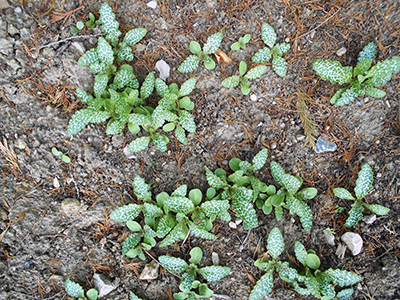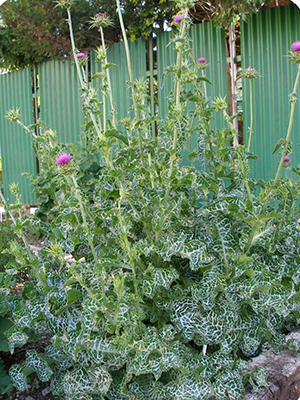Silybum marianum




| ENG | Milk thistle |
| SK | Pestrec mariánsky |
| CZ | Ostropestřec mariánský |
| PL | Ostropest plamisty |
| HU |
Taxonomic characteristic:
Family: Asteraceae, Tribe: Cynareae, Genus: Sylibum
Using
Silybum marianum is native to the Mediterranean region of Europe Cultivated fields for the production of raw material for the pharmaceutical industry exist on a larger scale in Austria, Germany, Hungary, Poland, China and Argentina.
There are collected mainly fruits, sometimes leaves or roots which however have significantly lower treatment effects compared to the fruit. The compounds of milk thistle (flavonoids silybin, silydianin and silychristin) supports the regeneration of damaged liver cells (and prevent the entry of toxic materials into the liver tissue), strengthens the immune system and acts as a strong antioxidants.
The young shoots, roots, and flower heads (think of artichokes) could be used for good food (boiled or roasted eaten raw steamed, stewed, etc.) The mature leaves can also be used, though they certainly have a stronger flavor than the young shoots — they make a pretty good spinach substitute, and they are quite nutritious.
Botanical description and occurrence:
Members of this genus grow as annual or biennial plants. Silybum marianum has other common names include cardus marianus, milk thistle, Marian thistle, Saint Mary's thistle, Mediterranean milk thistle, variegated thistle and Scotch thistle.
The erect stem is tall, branched and furrowed but not spiny. The large, alternate leaves are waxy-lobed, toothed and thorny, as in other genera of thistle. The lower leaves are cauline (attached to the stem without petiole). The upper leaves have a clasping base. They have large, disc-shaped pink-to-purple, rarely white, solitary flower heads at the end of the stem. The flowers consist of tubular florets. The phyllaries under the flowers occur in many rows, with the outer row with spine-tipped lobes and apical spines. The fruit is a black achene with a white pappus.
Why to have the plant in your garden:
Because of medicinal and edible using. The plant is also used as a decorative element in gardens, and its dried flower heads may be used for the decoration of dry bouquets.
This plant is unique in ability to protect the liver and has no equivalent in the pharmaceutical drug world.
Text:
Ing. Ján Farkaš, SUA, Nitra, Slovak Republic
Photo:
Dr. Ivana Mezeyová, SUA, Nitra, Slovak Republic
Links to scientific articles (if it is possible):
https://www.mdidea.com/products/herbextract/silymarin/data01.html
http://www.herbwisdom.com/herb-milk-thistle.html

